Key takeaways:
- Advocacy for gender equality must be intersectional, recognizing the complex layers of privilege and oppression.
- Understanding violence’s broader impacts includes its psychological toll, societal ripple effects, and significant economic consequences.
- Engaging communities involves creating safe spaces for open discussions and valuing participant feedback to foster investment in advocacy.
- Personal stories serve as powerful tools for inspiring change and bridging generational gaps in understanding violence and conflict resolution.
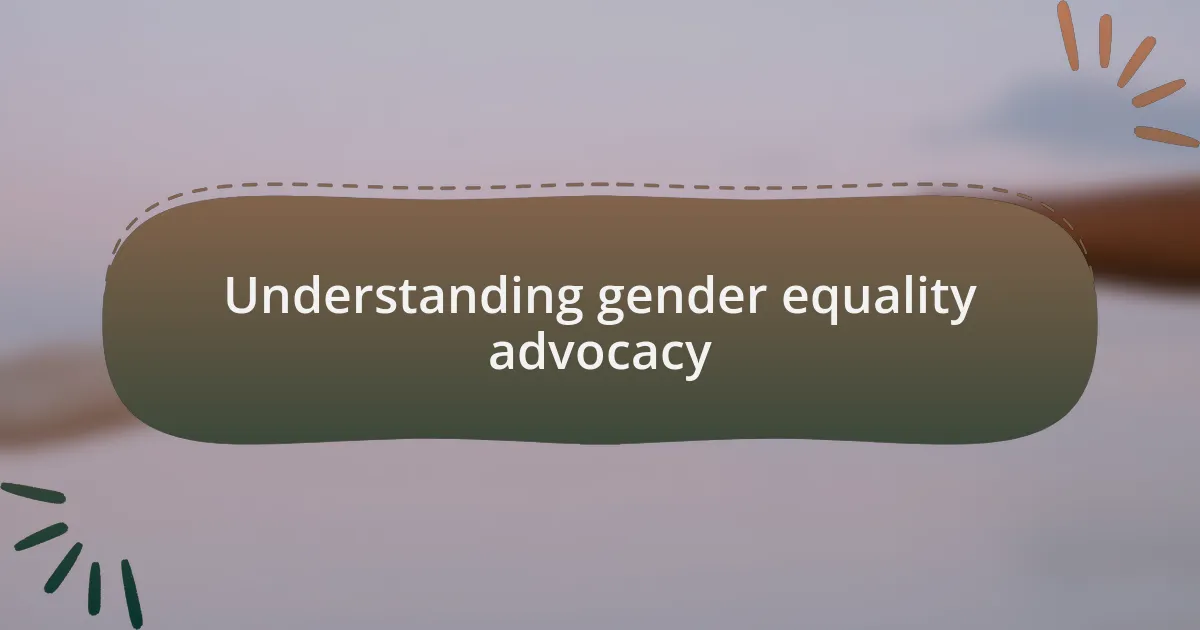
Understanding gender equality advocacy
Gender equality advocacy is not just about promoting fairness; it’s about recognizing the deep-seated social structures that perpetuate inequality. I remember a workshop I led where participants shared their stories of discrimination; their raw emotions revealed the urgency of this cause. How can we truly understand equality if we don’t listen to those voices that have been marginalized?
Engaging with gender equality requires an intersectional approach, acknowledging how factors like race, class, and sexuality intersect with gender. During a discussion with a diverse group of activists, one participant articulated how her experiences as a woman of color made her fight for equality even more complex. It struck me—how often do we overlook the layers of privilege and oppression that shape our understanding of advocacy?
To advocate effectively, we must educate ourselves continually. I often find myself diving into research or attending seminars to stay informed, realizing that knowledge is power. Have you ever considered how your own education—or lack thereof—impacts your ability to advocate for others? Every insight gained can shift our perspective and empower us to make a more profound impact in our communities.
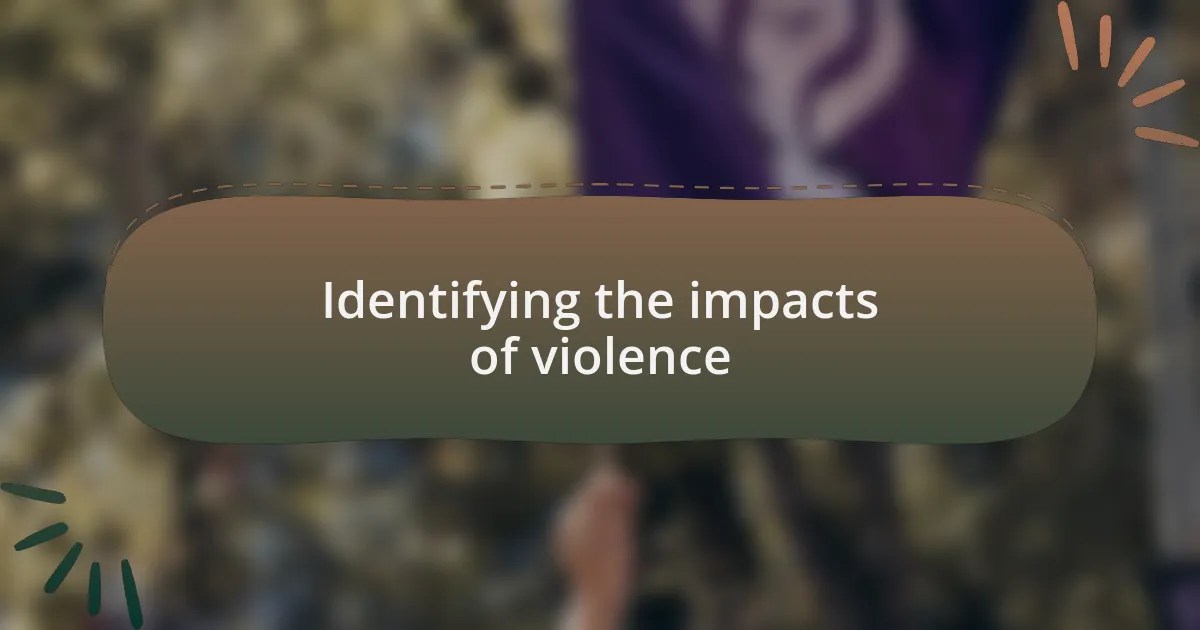
Identifying the impacts of violence
Violence has a ripple effect that extends beyond individual victims, influencing entire communities. I recall attending a community meeting where a local police officer spoke about how domestic violence incidents often led to increased criminal activities, illustrating the broader societal impacts. Isn’t it eye-opening to consider that one act of violence can set off a chain reaction that affects many lives?
Understanding the psychological toll of violence is equally vital. I once spoke with a survivor who detailed the long-lasting emotional scars she faced, impacting her ability to trust others. It made me reflect—how often do we underestimate the mental health ramifications of violence, not just for survivors but for their families and friends as well?
Moreover, the economic consequences of violence can be staggering. In another session, an economist highlighted how domestic abuse costs businesses significant loss in productivity due to absenteeism and decreased morale. Have you considered how the economic impact of violence could affect broader social initiatives? It’s crucial for us to acknowledge these interconnected effects if we aim to create effective solutions.
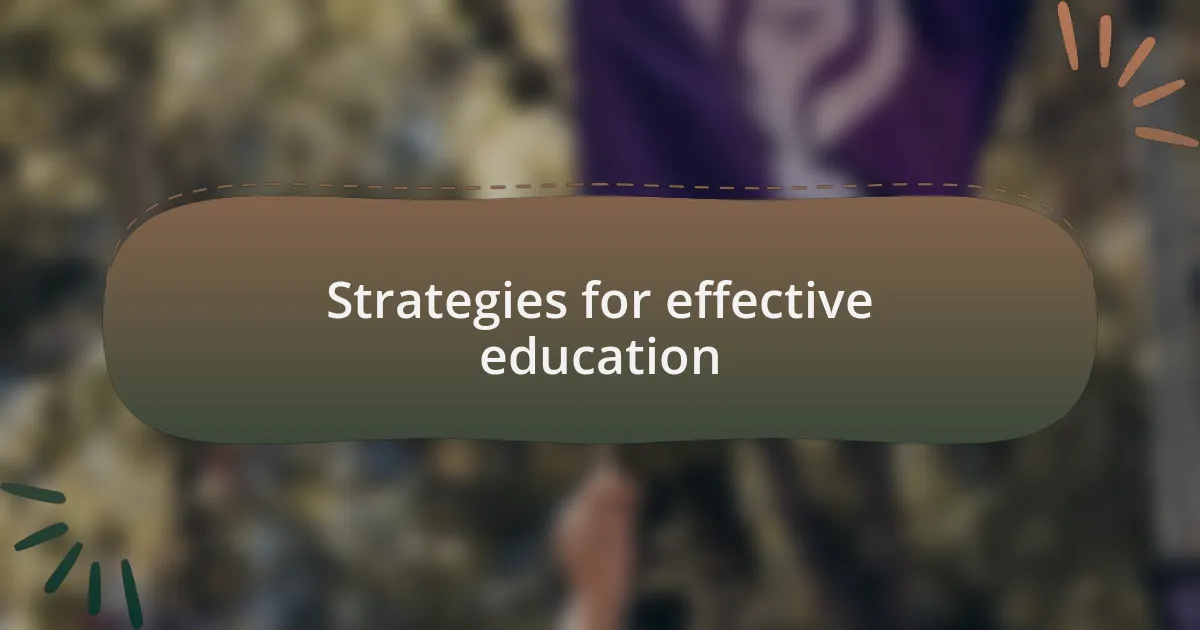
Strategies for effective education
Effective education on violence necessitates an engaging approach that resonates with diverse audiences. One strategy I find helpful is incorporating storytelling. By sharing real-life experiences or testimonials, I create a vivid connection that underscores the issue’s gravity. For instance, I once facilitated a workshop where participants shared their personal experiences with violence, and it became clear to me how these stories helped foster empathy and understanding among attendees, igniting a powerful conversation around prevention.
Another valuable tactic involves interactive learning. I prioritize activities that encourage participation, such as role-playing scenarios that illustrate the dynamics of violent situations. I vividly remember a session where participants acted out various responses to conflict; it was enlightening to see how their perceptions of violence shifted. Engaging individuals in hands-on experiences ensures that the education is not only informative but transformative.
Lastly, leveraging community resources can significantly enhance educational efforts. Collaborations with local organizations can provide comprehensive support and resources. For example, I’ve engaged local mental health professionals to speak at events, which enriches the conversation with expert insights. This partnership not only diversifies the educational content but also opens up pathways for individuals to seek help. Have you considered how community collaboration can amplify the impact of your educational initiatives? It’s a game changer in fostering a supportive environment for discussions on violence.
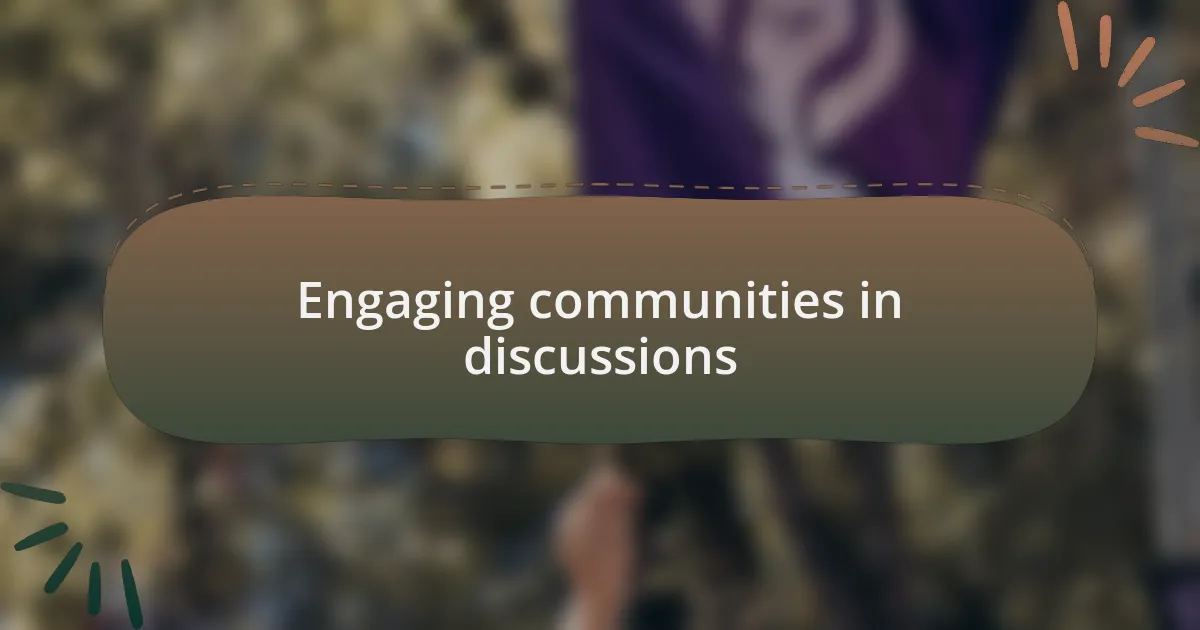
Engaging communities in discussions
Engaging communities in discussions about violence involves creating safe spaces where everyone feels heard and valued. I remember organizing a community forum that invited local residents to share their thoughts and concerns about safety in their neighborhoods. As I listened to their stories, I realized how the act of sharing transformed the room; it became a tapestry of experiences that revealed deep-seated fears and hopes, paving the way for collective healing and action.
One effective method I’ve used is establishing small discussion groups focused on specific aspects of violence, such as domestic abuse or bullying. In one group, a participant opened up about their experiences with bullying in school, which sparked a powerful dialogue among attendees. I noticed how others began to share their stories too, and it was in that moment I understood the power of vulnerability. It’s incredible how an open discussion can dismantle shame and create solidarity among community members; have you ever witnessed such a transformation?
Encouraging feedback and suggestions from the community can also deepen engagement. During a recent outreach initiative, I asked participants what topics they felt were most pressing regarding violence in their lives. The responses surprised me, revealing concerns I hadn’t initially considered. This demonstrated a fundamental truth: when you give people a voice, they become invested in the conversation, making them more likely to take action. How can we harness this feedback to shape our future discussions for even greater impact?
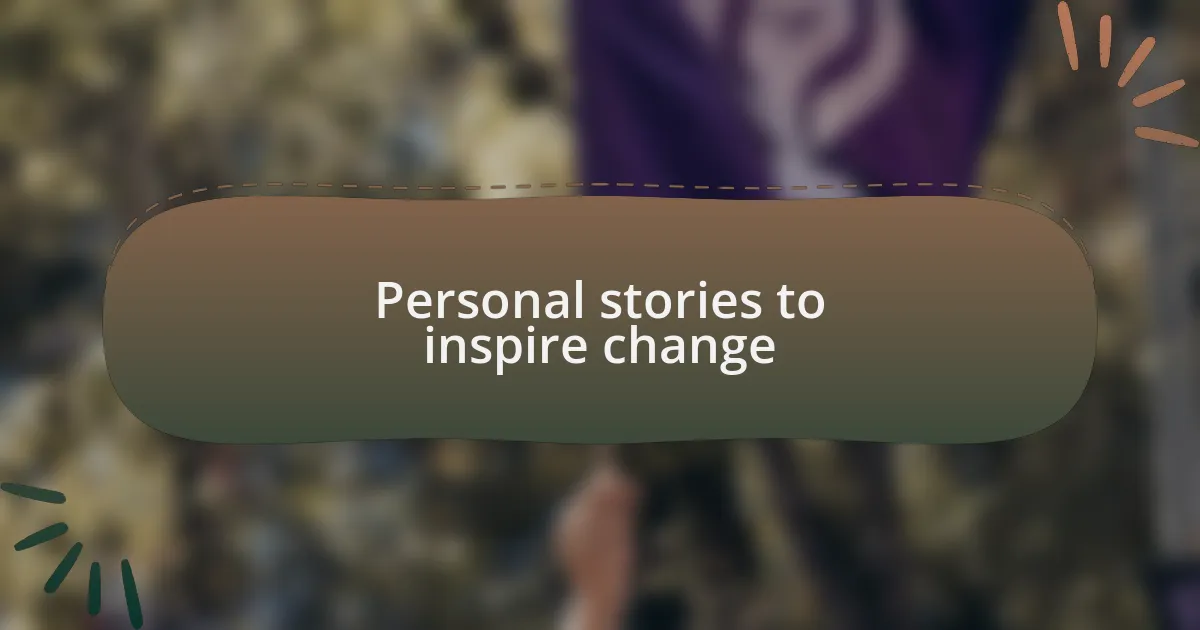
Personal stories to inspire change
Personal stories have a unique way of touching hearts and catalyzing change. I recall a workshop where a woman bravely shared her journey from victim to advocate against domestic violence. Her candid account stirred the audience; I saw tears, nods of empathy, and even a few whispered acknowledgments of similar struggles. It’s moments like these that remind us just how powerful storytelling can be—it not only validates personal experiences but also ignites a collective resolve to challenge the status quo.
One evening, during a community gathering, a young man recounted a near-fatal encounter with gang violence. He spoke passionately about how that experience propelled him to educate others about the importance of open dialogues in schools. Listening to him, I felt a shiver of hope; it became clear that sharing such stories can break cycles of violence. Isn’t it fascinating how one person’s narrative can create ripples of awareness and foster understanding among those who, until then, might have been silent?
Sometimes, I find myself reflecting on how storytelling can bridge generational gaps. At a recent meeting with youth, an elder shared their own childhood experiences with conflict resolution, emphasizing negotiation over aggression. The room fell silent as both young and old connected through this shared wisdom. What struck me was how their conversation shifted; the younger ones expressed a desire to learn more about non-violent methods. Could it be that these personal stories create pathways not only for understanding but for real, tangible change?

Creating actionable resources for education
Creating actionable resources for education is vital for combating violence and fostering understanding. I remember developing a simple toolkit for trainers who work with adolescents. This toolkit included interactive exercises, discussion prompts, and easy-to-follow guides on how to facilitate conversations about respect and consent. It was rewarding to see the transformation in the trainers’ approaches as they embraced these resources, making the topic less intimidating and more approachable.
In another instance, I collaborated with local schools to create a series of workshops focused on peer mediation. Observing the students actively role-play scenarios taught them essential conflict resolution skills, and it was astonishing to witness the shift in their interactions. How often do we think about the influence of having the right framework in place? Providing structured activities enabled the students not just to learn but to practice these skills in real time, empowering them to take charge of their own learning.
There was also a time when I gathered feedback from participants in various sessions. They expressed a pressing need for ongoing resources and support even after the workshops ended. This insight led me to develop an online platform where individuals can access materials, share their experiences, and become a part of a broader community dedicated to advocacy. It made me realize that creating actionable resources goes beyond mere education; it’s about building a network of support that thrives on shared commitment and active engagement.